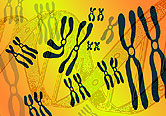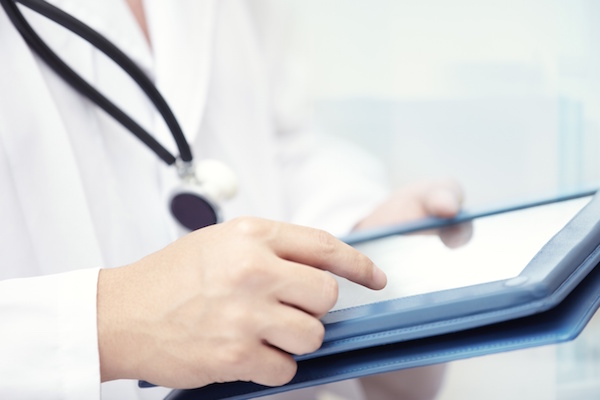
WEDNESDAY, July 20 (HealthDay News) — The race to develop the $1,000 genome test may be heating up. New technology promises to cut costs while speeding the amount of time it takes to decipher all of your genes and potentially provide a personalized report of health risks and possible therapies, a new report says.
The human genome was first mapped in 2001 and cost roughly $1 billion to do. Since then, researchers have been striving to develop less expensive DNA sequencing technologies.
One of those less expensive technologies, developed by Ion Torrent Systems Inc. in San Francisco, uses a semiconductor chip to sense DNA or genetic material instead of light. This eliminates the need for some of the more expensive equipment typically required for such sequencing, and it also works faster, said Dr. Maneesh Jain, vice president of marketing and business development at Ion Torrent.
Researchers were able to scan three bacterial strains and one human genome using the new technology, Jain said.
The new DNA scan uses the same semi-conductor chip technology as digital cameras, and in a way, the evolution of this DNA scanning technology is similar to that of the digital camera, he said.
“When it [digital photography] first started out, the resolution was not good and the pictures were not as good as on film. But the technology improved, which made it more accessible and now more people can enjoy photography and become better photographers,” he said.
A report on the new technology is published July 21 in the journal Nature.
As to when the coveted $1,000 gene scan will be available, Jain said that “we are approaching that goal very closely.”
Less expensive DNA scanning technology holds significant potential, Jain said. For example, rapidly decoding a bacterial strain could help put the brakes on an outbreak, he said, adding, “We could identify the strain super fast and get the fingerprint and trace it back to its routes.”
Other uses of DNA scans include better matching treatments to diseases, Jain said. So-called personalized medicine seeks to avoid trial-and-error by using genetic data found during a scan to better pair treatments with diseases.
These scans can also provide a snapshot of what may be to come with an individual’s health. But knowing you may develop a disease isn’t always helpful if there’s nothing you can do to prevent it.
Jain noted that “if you are genetically predisposed to a disease like diabetes, you can change your lifestyle.”
But some medical experts, including Dr. Peter Gregersen, director of the Robert S. Boas Center for Genomics and Human Genetics at the Feinstein Institute for Medical Research in Manhasset, N.Y., are taking a more cautious approach when evaluating the new technology
“Most of what genetics tell us is that there are a lot of fairly common variants that have a modest degree of risk for diseases,” Gregersen said. “This is important from a scientific point of view, but the data itself is not actionable.
“The risk of disease associated with high blood pressure, smoking and high cholesterol is far greater than most of the genetic risks coming out of whole genome scanning,” Gregersen added. For example, if your genome scan identified a mutation that put you at risk for macular degeneration, a leading cause of blindness, “you may see an ophthalmologist, and there are forms that are treatable, but knowing your genetics won’t impact this much,” he said.
“Getting it is one thing, but adequately interpreting the information it provides is another big part of this,” Gregersen said. “It’s a fun thing to do, and there are ways to do it now in which you can contribute to basic science, such as by taking part in a larger registry.” But, he added, “In isolation, this information is not helpful yet.”
More information
For more on the human genome project, visit the U.S. National Center for Biotechnology Information.

